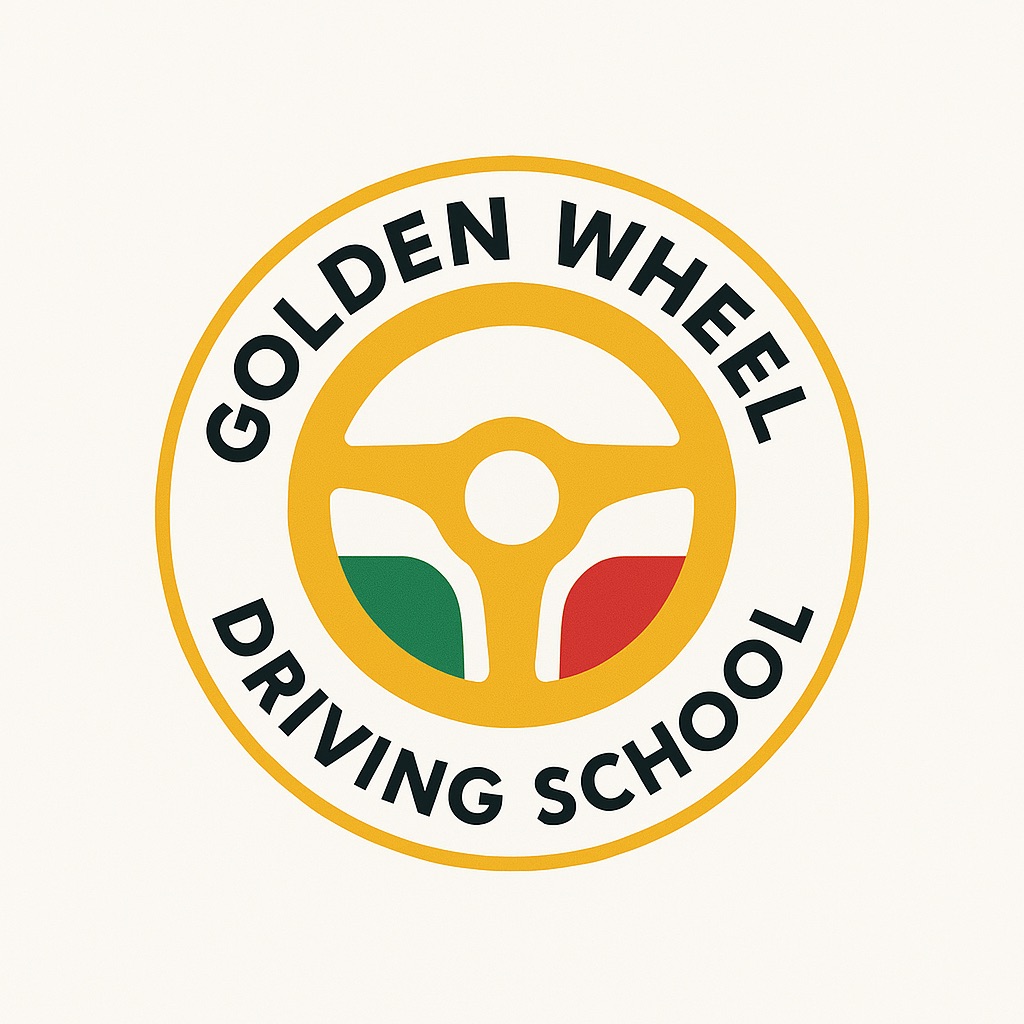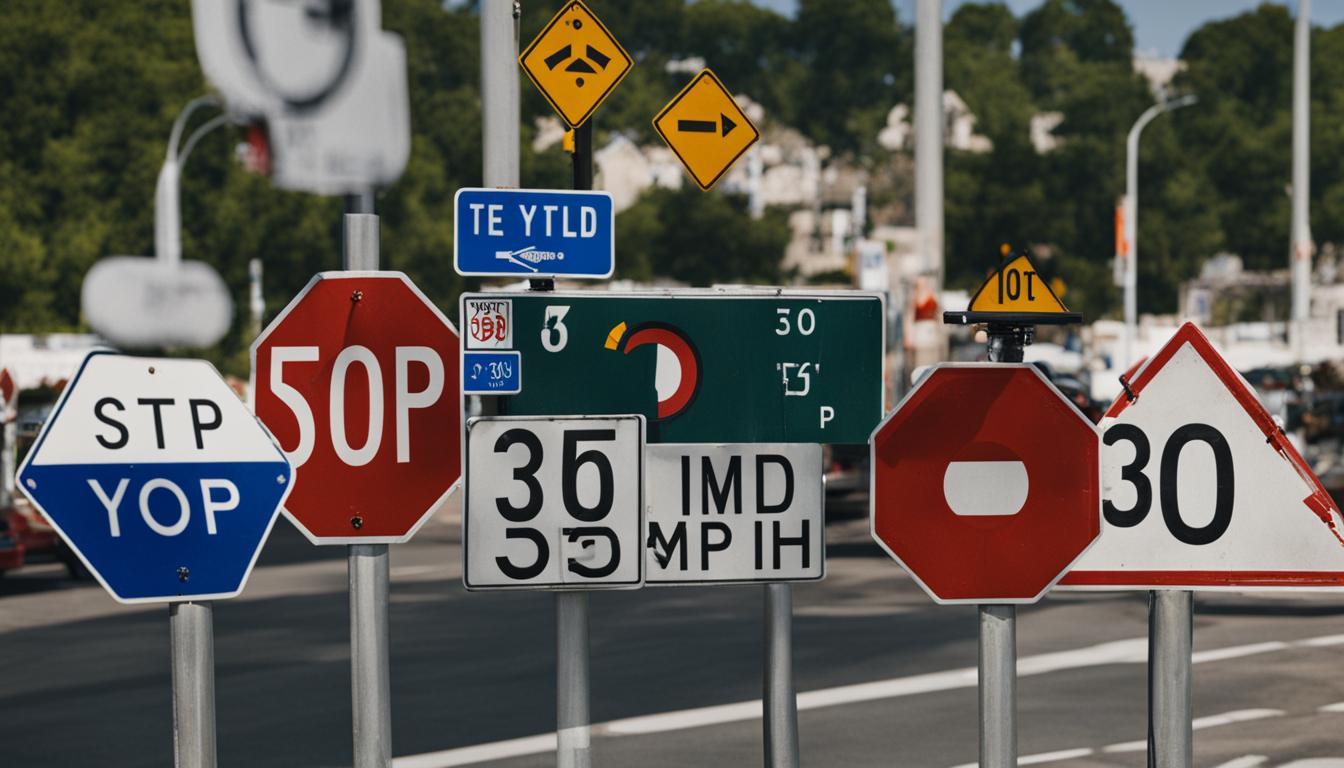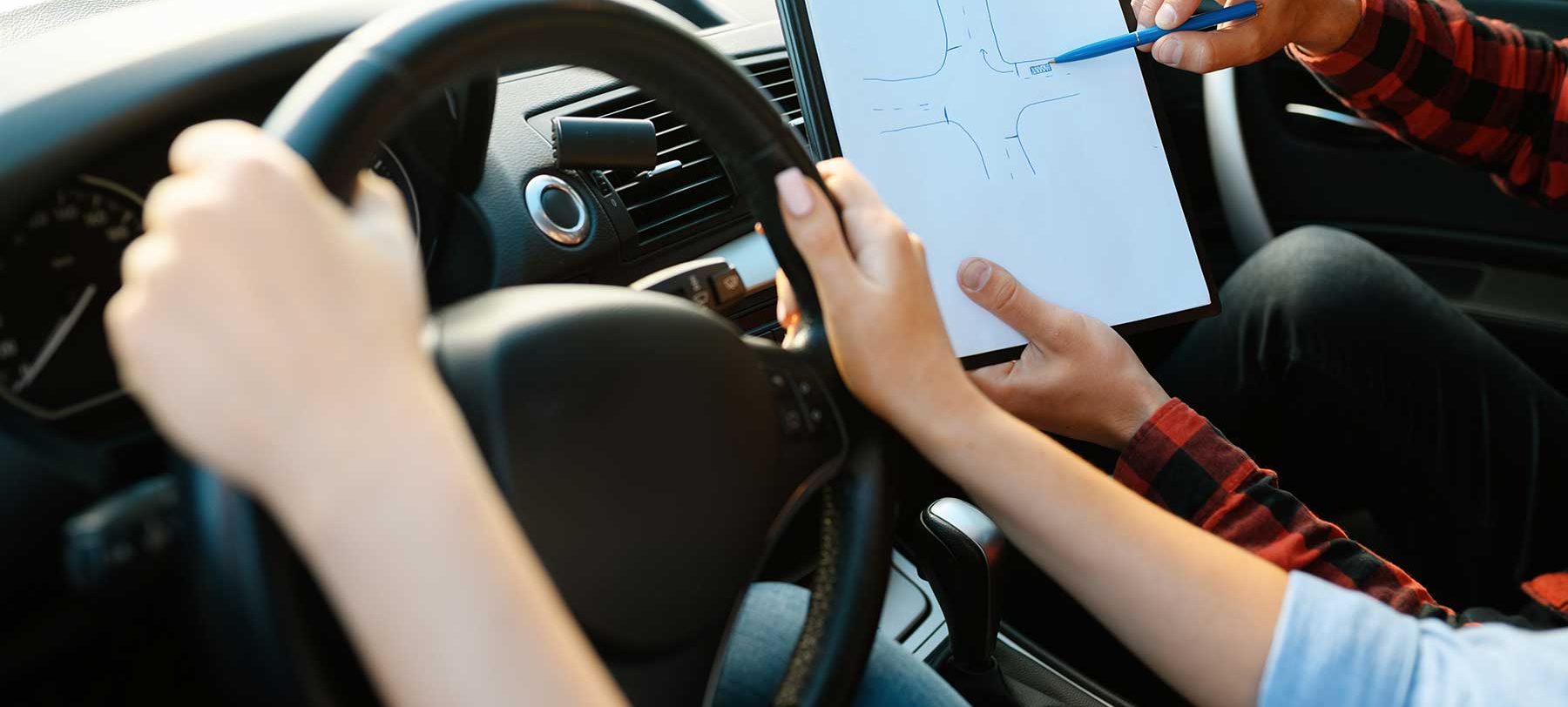Driving can be an exciting and liberating experience, but it comes with great responsibility. As a new driver, it’s crucial to develop safe driving habits from the start to ensure your safety and the safety of others on the road. In this section, we will provide you with the top 10 safe driving tips to help you navigate the roads confidently and develop good driving habits from the outset.
Key Takeaways:
- Developing good driving habits from the beginning is essential for new drivers
- The top 10 safe driving tips for new drivers can help navigate the roads confidently
- Driving safely is a great responsibility that should be taken seriously
- By following these tips, new drivers can become confident and responsible drivers on the road
- Safe driving tips are crucial for beginners to adopt to ensure their safety and that of others on the road
Defensive Driving Techniques: Top 10 Safe Driving Tips for New Drivers
As a new driver, adopting defensive driving techniques can be the difference between getting to your destination safely and being involved in an accident. Defensive driving focuses on anticipating potential hazards and taking proactive steps to avoid them. Here are some defensive driving techniques to keep in mind:
- Maintain a safe following distance. Keep at least a three-second gap between your vehicle and the one in front of you to avoid rear-end collisions.
- Stay alert: Pay attention to your surroundings, including other vehicles, pedestrians, and potential hazards such as construction zones or adverse weather conditions.
- Check your mirrors: Ensure your mirrors are properly adjusted and regularly check them while driving.
| Technique | Description |
|---|---|
| Scan the road ahead | Keep your eyes moving and scan the road ahead to anticipate potential hazards. |
| Avoid aggressive driving | Don’t tailgate, cut off other drivers, or engage in other aggressive driving behaviors. |
| Stay visible | Make sure your lights are on and your vehicle is visible to other drivers, especially in low-light conditions. |
Remember, defensive driving is all about being proactive and taking measures to prevent accidents before they happen. By adopting these techniques, you can stay safe on the road and avoid accidents caused by reckless or aggressive driving behaviors.
Understanding Traffic Signs and Signals
As a new driver, it is crucial to understand common traffic signs and signals to drive safely and legally. Traffic signs and signals communicate the rules of the road, warn of potential dangers, and provide information on the road ahead.
There are three basic categories of traffic signs:
- Regulatory signs: These signs indicate legal requirements, such as speed limits, stop signs, and no parking zones.
- Warning signs: These signs notify drivers of potential hazards ahead, such as sharp turns, pedestrian crossings, and construction zones.
- Guide signs: These signs provide information on destinations, routes, and services, such as rest areas, hospitals, and gas stations.
Additionally, traffic signals control the flow of traffic at intersections, including stoplights, yield signs, and crosswalks. It is essential to obey these signals to prevent accidents and avoid traffic violations.
New drivers should familiarize themselves with traffic signs and signals by studying driver education materials, taking practice tests, and observing signs and signals while driving. Ignoring or misunderstanding traffic signs and signals can result in fines, accidents, or even legal consequences.
Avoiding Distractions While Driving
Distracted driving is one of the major causes of accidents, especially for new drivers. As a responsible driver, it’s essential to avoid distractions and stay focused on the road. The most common distractions include texting, talking on the phone, and eating while driving. It may seem harmless, but even a momentary distraction can result in a collision.
To prevent distractions while driving, it’s best to keep your phone out of reach. If you must use your phone, pull over to a safe location. Another tip is to plan ahead and eat before or after driving, rather than while on the road.
Remember, responsible driving means avoiding distractions and keeping yourself and others safe while on the road.
Adapting to Adverse Weather Conditions
Driving in adverse weather conditions can be challenging for new drivers. It’s essential to prepare for these situations to prevent losing control of the vehicle and causing an accident. Here are some adverse weather driving tips that will help you stay safe:
1. Slow Down
Adverse weather conditions can reduce visibility and make the roads slippery, posing a serious risk to drivers. It’s crucial to slow down and leave plenty of room for sudden stops or turns.
2. Check Your Vehicle
Before hitting the road in harsh weather, check your car’s condition. Make sure the windshield wipers are working correctly and the tires have adequate tread for better traction.
| Condition | Tire Tread Depth |
|---|---|
| Dry Roads | 3/32 inch or more |
| Wet Roads | 4/32 inch or more |
| Snowy Roads | 6/32 inch or more |
3. Turn on Your Lights
Make sure your headlights are on to enhance your visibility and help other drivers see you on the road. If you’re driving in fog, use your fog lights in addition to your headlights.
4. Avoid Sudden Movements
Sudden movements may cause your car to spin out of control, especially during icy or snowy conditions. Make sure to steer and brake gently.
“In adverse weather conditions, never underestimate the power of Mother Nature. Always be prepared and exercise caution.”
By following these tips, you can significantly reduce the likelihood of an accident when driving in adverse weather conditions. Stay safe on the roads by staying alert and prepared!
Maintaining a Safe Following Distance
When new drivers are behind the wheel, it’s essential to maintain a safe following distance to prevent rear-end collisions. Defensive driving techniques like this one can help prevent accidents and save lives.
The three-second rule is an effective way to maintain a safe following distance. To use this rule, select a fixed object on the road ahead, such as a sign or tree. When the vehicle in front of you passes the fixed object, count to three. Your vehicle should pass the fixed object before you finish counting to three. If not, you’re following too closely and need to adjust your distance accordingly.
It’s important to maintain a safe following distance in various situations, such as during heavy traffic, bad weather, or when driving at high speeds. You never know when a sudden stop or obstacle might appear, so it’s better to be safe than sorry.
Defensive driving techniques like maintaining a safe following distance can help new drivers prevent accidents and stay safe on the road. By being aware of your surroundings and giving yourself enough space to react, you can develop the skills and habits needed to become a responsible and defensive driver.
Practicing Proper Speed Control
Maintaining a proper speed is crucial for safe driving and preventing accidents, particularly for new drivers who are still developing their driving skills. As a new driver, it’s important to adhere to speed limits and adjust your speed according to the weather and road conditions.
Tip: Remember that speed limits are the maximum allowable speed, not the target speed. Always reduce your speed when driving in adverse weather conditions or in areas with pedestrians or heavy traffic.
Tip: Maintain a safe following distance and avoid tailgating other vehicles, especially on highways or in heavy traffic.
Tip: Always be aware of your surroundings and anticipate any potential hazards on the road. Defensive driving techniques, such as scanning the road ahead and checking mirrors regularly, can help you stay alert and avoid collisions.
Tips for Practicing Proper Speed Control
| Tip | Description |
|---|---|
| Adhere to Speed Limits | Always obey posted speed limits to prevent accidents and avoid traffic violations. |
| Adjust Speed for Weather Conditions | Reduce speed in rain, snow, or fog to maintain control of the vehicle and ensure visibility. |
| Maintain a Safe Following Distance | Keep a distance of at least three seconds from the vehicle in front of you to allow time to react to sudden changes. |
| Anticipate Hazards | Use defensive driving techniques to scan the road ahead and check mirrors regularly to avoid potential hazards. |
By practicing proper speed control and adopting responsible driving habits, new drivers can gain confidence, ensure their safety, and contribute to making the roads a safer place for everyone.
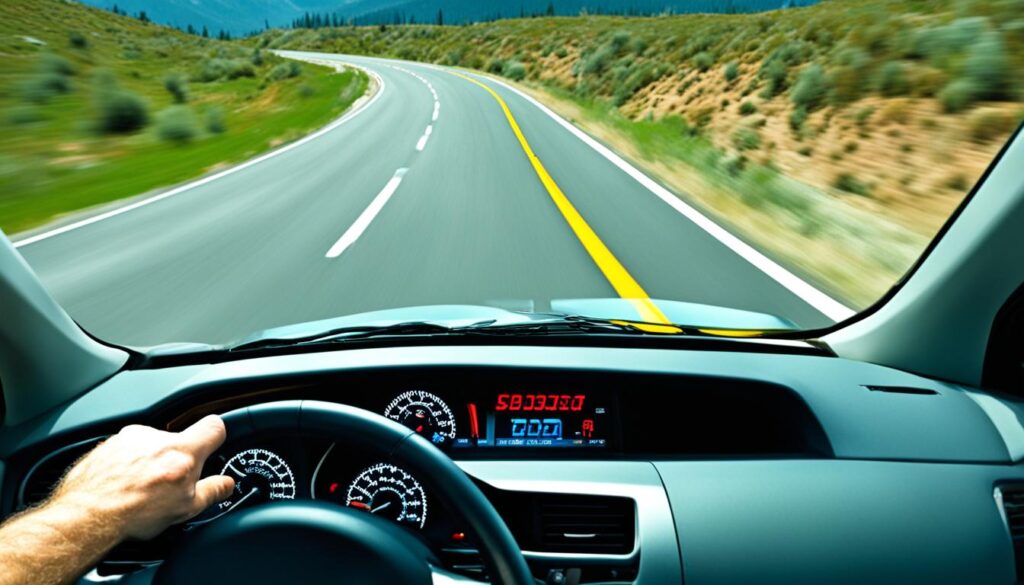
Using Mirrors and Blind Spot Awareness
When driving, it is essential to be aware of your surroundings. Properly using mirrors and checking blind spots are crucial to preventing accidents and ensuring safe driving habits, especially for new drivers.
Adjusting side and rearview mirrors correctly is vital, as it will give you a clear view of the road behind you. Ensure that your mirror is positioned so that you can see the entirety of the lane next to you. Be sure to avoid adjusting your rearview mirror to view directly behind you, as this can create a blind spot where you cannot see other vehicles behind you.
An effective method to check your blind spot is to look over your shoulder before changing lanes or making any turns. Initially, it may take extra effort to remember to check your blind spot each time, but it will become a habit with time and practice.
Using mirrors and keeping an eye on blind spots allow you to avoid collisions with vehicles in surrounding lanes or hiding at angles beyond the scope of your mirrors. Paying more attention to your surroundings on the road is the core principle of defensive driving techniques, which help prevent accidents for new drivers.
“Mirrors reflect only a part of reality, but in the blind spots, anything can happen.”
Practicing Parking and Maneuvering Skills
Parking and maneuvering can be challenging for new drivers, but they are essential parts of driving safely and responsibly. As a beginner, it’s crucial to take the time to master these skills to avoid accidents and prevent harm to yourself and others on the road.
Parallel parking is a common maneuver that many drivers struggle with. A simple technique to follow is to pull up alongside the parked car in front of the empty space you want to park in and align your rear bumper with theirs. Turn your wheel all the way to the right and slowly reverse into the space until your car is at a 45-degree angle. Turn your wheel all the way to the left and reverse until your car is straight in the space. Finally, turn your wheel back to the center and adjust your position if needed.
When backing up, it’s essential to use your mirrors and check blind spots to ensure there are no obstacles behind or beside you. Make sure to turn your head and look behind you when necessary. If you’re in doubt, get out of the vehicle and check your surroundings.
Navigating parking lots can also be tricky, especially if the lot is busy or crowded. It’s essential to stay alert, drive slowly, and keep an eye out for pedestrians and other vehicles. Always follow parking signs and markings, and never park in designated no-parking zones.
Here are some essential tips to keep in mind when practicing your parking and maneuvering skills:
- Always signal before turning or changing lanes.
- Practice in an empty parking lot before attempting to park on the streets.
- When in doubt, take it slow and be extra cautious.
- Always be aware of your surroundings, and be prepared to react if necessary.
Practicing proper parking and maneuvering techniques takes time and patience, but it’s worth it to develop safe driving habits as a new driver. Remember to stay focused, alert, and observant, and always prioritize the safety of yourself and others on the road.
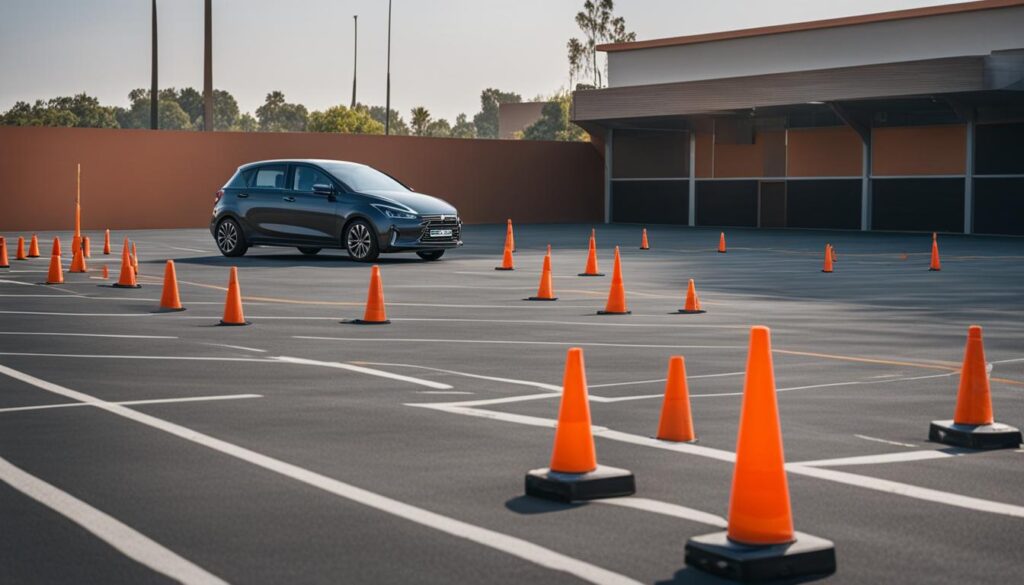
Avoiding Impaired Driving
Responsible driving is key to preventing accidents, especially for new drivers. It’s important to remember that operating a vehicle under the influence of alcohol or drugs is not only illegal but also extremely dangerous. Driving while impaired significantly affects a person’s ability to make quick decisions, react to changing road conditions, and stay alert behind the wheel.
There are severe consequences for impaired driving, including fines, license suspensions, and even imprisonment. Additionally, impaired drivers put themselves and others at risk of serious injury or death in the event of an accident.
As a new driver, it’s crucial to prioritize safe driving practices at all times. Planning ahead and finding a designated sober driver, using public transportation, or arranging for a ride-sharing service are all responsible alternatives to driving under the influence.
Remember, responsible driving is not just about avoiding alcohol and drugs. It also means avoiding distractions like using a cellphone or eating while driving, sticking to the speed limit, and always wearing a seatbelt. By adopting safe driving practices, new drivers can reduce their risk of accidents and stay safe on the road.
Maintaining Vehicle Maintenance
Regular vehicle maintenance is a crucial aspect of safe driving and responsible vehicle ownership. By performing routine checks and maintenance, new drivers can prevent accidents caused by vehicle malfunctions and prolong the lifespan of their cars.
One of the most important maintenance tasks for new drivers is checking tire pressure regularly. Driving on underinflated tires can lead to decreased fuel efficiency, poor handling, and even tire blowouts. Use a tire pressure gauge to check tire pressure regularly, and ensure that the pressure is at the recommended level stated in the car owner’s manual.
Another key maintenance task is changing the oil regularly. Clean oil helps ensure that the engine is running smoothly and efficiently. Follow the owner’s manual recommendations for the frequency of oil changes, and be sure to use the proper type of oil for the vehicle.
Brake inspections are also essential for maintaining safe driving habits. Squeaking or grinding noises when applying the brakes, longer braking distances, or a vibrating brake pedal are all signs that the brakes should be inspected by a qualified mechanic.
When it comes to vehicle maintenance, prevention is always better than cure. By performing routine checks and promptly addressing any issues, new drivers can keep their cars running smoothly and safely on the road.
Conclusion
As a new driver, developing safe driving habits is crucial for your safety and the safety of others on the road. By following these top 10 safe driving tips, you can navigate the roads with confidence and avoid accidents caused by reckless or distracted driving behaviors.
Remember to practice defensive driving techniques, understand and obey traffic signs and signals, avoid distractions while driving, adapt to adverse weather conditions, maintain a safe following distance, control your speed, use mirrors and blind spot awareness, practice parking and maneuvering skills, avoid impaired driving, and maintain your vehicle regularly.
By practicing responsible driving and following these tips, you can become a confident and safe driver on the road. Always remember that safe driving is your responsibility and the key to preventing accidents and keeping everyone safe.
Stay safe and enjoy the journey!
FAQ
What are some safe driving tips for new drivers?
Some safe driving tips for new drivers include always wearing your seatbelt, following the speed limit, avoiding distractions, and keeping a safe distance from other vehicles. It’s also important to stay alert, anticipate potential hazards, and obey traffic laws.
How can I practice defensive driving techniques?
To practice defensive driving, you should always be aware of your surroundings, anticipate possible dangers, and maintain a safe following distance. Additionally, avoid aggressive behaviors such as tailgating and be prepared to react to unexpected situations on the road.
What are the most common traffic signs and signals that new drivers should know?
New drivers should familiarize themselves with traffic signs and signals such as stop signs, yield signs, traffic lights, speed limit signs, and pedestrian crossing signs. Understanding the meaning and obeying these signs is crucial for safe driving.
How can I avoid distractions while driving?
To avoid distractions while driving, it’s important to keep your focus on the road. This means avoiding activities such as texting or talking on the phone, eating, or adjusting the radio while driving. Minimize distractions by using hands-free devices and pulling over if you need to attend to something.
What should I do when driving in adverse weather conditions?
When driving in adverse weather conditions, such as rain, snow, or fog, reduce your speed and increase your following distance. Use your headlights and windshield wipers appropriately, and be extra cautious on slippery or icy roads.
How can I maintain a safe following distance?
To maintain a safe following distance, follow the three-second rule. Choose a fixed point on the road and ensure that at least three seconds pass between when the car in front of you passes that point and when your vehicle reaches it. This allows for sufficient time to react to sudden stops or changes in traffic.
What is the importance of proper speed control?
Proper speed control is vital for new drivers to maintain control of their vehicles and react to unexpected situations. Driving at a speed appropriate for the road conditions and obeying speed limits helps prevent accidents and reduces the risk of injuries.
How can I effectively use mirrors and be aware of blind spots?
Adjust your mirrors properly so that you have a clear view of the road behind you. When changing lanes or making turns, check your mirrors, glance over your shoulder to check for blind spots, and use your turn signals to indicate your intentions.
What are some tips for practicing parking and maneuvering skills?
To practice parking and maneuvering skills, find an empty parking lot or quiet street where you can practice parallel parking, backing up, and navigating tight spaces. Take it slow, use your mirrors, and be aware of your surroundings.
How important is it to avoid driving under the influence?
Driving under the influence of alcohol or drugs is extremely dangerous and illegal. It impairs your judgment, reaction time, and coordination, putting your life and the lives of others at risk. Always choose a designated driver or use alternative transportation if you have consumed alcohol or drugs.
Why is vehicle maintenance important for safe driving?
Proper vehicle maintenance ensures that your vehicle is in good working condition, reducing the risk of breakdowns or malfunctions while driving. Regular checks of tire pressure, oil levels, brakes, and other crucial components help maintain safety and prevent accidents caused by mechanical failures.
